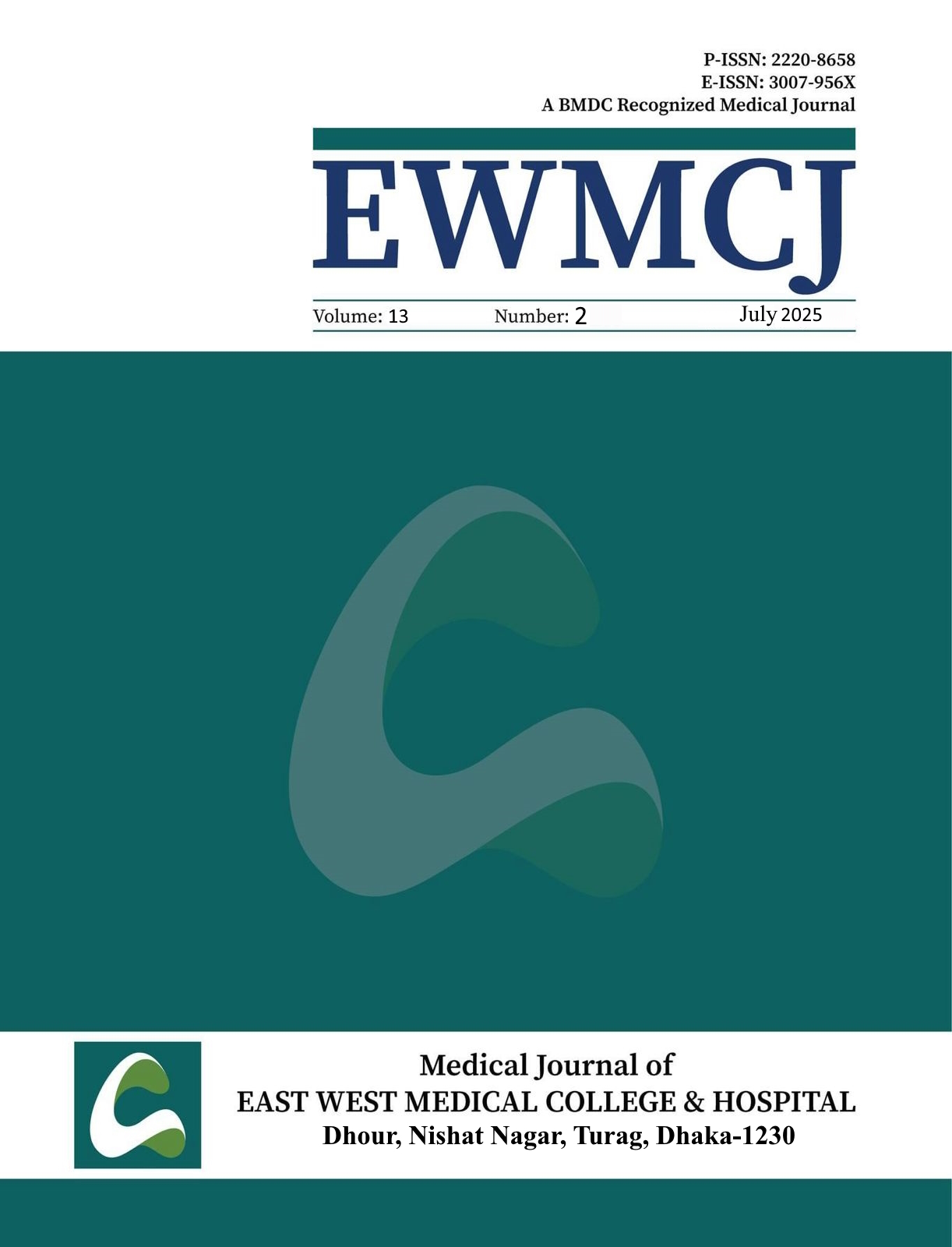Palmar Dermatoglyphics of Autistic and Healthy Children in Rajshahi District of Bangladesh : A Comparative Study
DOI:
https://doi.org/10.3329/ewmcj.v13i2.79623Keywords:
Dermatoglyphics, Loop, Whorl, Arch, ATD angleAbstract
Background: Dermatoglyphics is the scientific study of the typical ridges found on human fingers, palm of the hands, toes and soles of the feet. There may be variation of fingerprints between autistic and healthy children.
Objective: The purpose of the study was to assess and compare the fingerprint patterns between autistic and healthy children.
Methodology: It was a cross sectional type of comparative study conducted under the guidance of Anatomy department of Rajshahi Medical College for a period of 1 year from January 2023 to December 2023. This study was performed on 220 children between the age of 05-15 years group, among them 110 were autistic and 110 healthy children.. Fingerprints were taken by ink and pad method of Cummins..
Result: Distribution of fingerprint pattern in right hand of the autistic children showed that loop pattern was 63.6%, whorl was 24.9% and arch was 11.1% and in case of healthy loop was 74% whorl was 19.1% and arch was 6.7%. Fingerprint pattern of left hand of autistic children revealed that the loop was 66.4%, whorl was 22.4% and arch was 10.7% and in healthy children loop was 70.4%, whorl was 21.4% and arch was 7.8 %. The pattern differences between autistic and healthy children were highly significant (p < 0.001) .The mean ATD angle was 39.23º ± 2.5 in autistic children and was 43.23° ± 4.5° in healthy. The ATD angle was significantly increased in healthy children (p < 0.001 for each group).
Conclusion: The present study stated that the fingerprint pattern of autistic children was different from the healthy children. So, it might be helpful for the diagnosis of neurodevelopmental diseases.
EWMCJ Vol. 13, No. 2, July 2025: 137-142
105
68
Downloads
Published
How to Cite
Issue
Section
License
Copyright (c) 2025 Jannatun Nayeem, Opu Rani Podder, Fahad Ibne Mahafuz, Rubaiya Tabassum, Ishita Khanom, Sadia Afrin, M Al Masudur Raihan

This work is licensed under a Creative Commons Attribution 4.0 International License.




